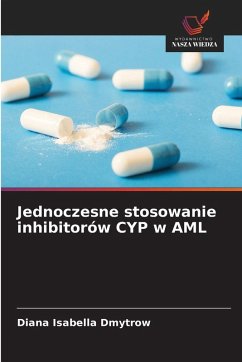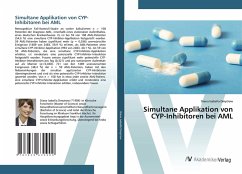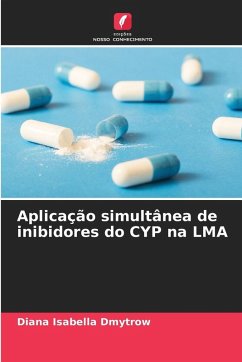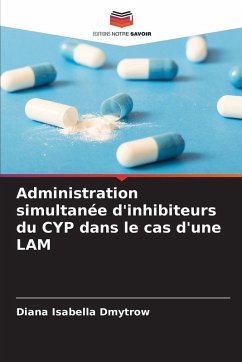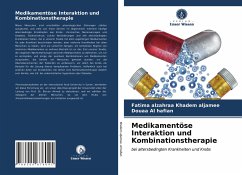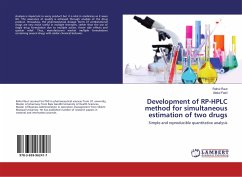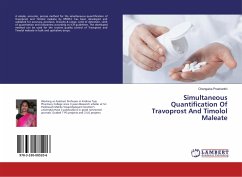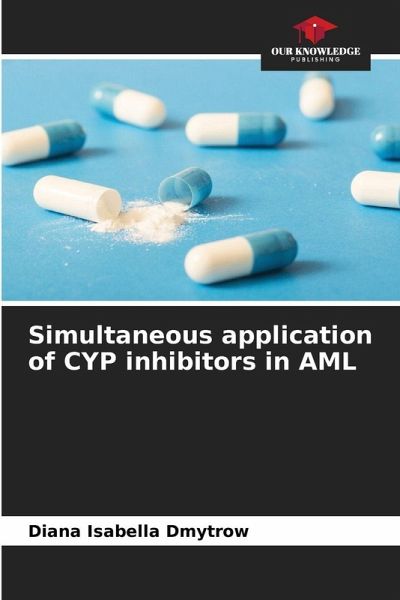
Simultaneous application of CYP inhibitors in AML
Versandkostenfrei!
Versandfertig in 6-10 Tagen
53,99 €
inkl. MwSt.

PAYBACK Punkte
27 °P sammeln!
Retrospective case-control study of n = 108 patients with a diagnosis of AML, calculated in advance, during an inpatient stay at a German hospital. Simultaneous CYP inhibitor application was observed in 59 of 108 AML patients (54.6%). 59 AML patients suffered significantly more (p = 0.036) adverse events (1489 out of 2483, 59.9%) than AML patients without simultaneous CYP inhibitor application (994 out of 2483, 40.1%). At least one potential CYP inhibitor interaction was detected in 59 of 59 AML patients who experienced simultaneous CYP inhibitor use. Women had significantly more potential CYP...
Retrospective case-control study of n = 108 patients with a diagnosis of AML, calculated in advance, during an inpatient stay at a German hospital. Simultaneous CYP inhibitor application was observed in 59 of 108 AML patients (54.6%). 59 AML patients suffered significantly more (p = 0.036) adverse events (1489 out of 2483, 59.9%) than AML patients without simultaneous CYP inhibitor application (994 out of 2483, 40.1%). At least one potential CYP inhibitor interaction was detected in 59 of 59 AML patients who experienced simultaneous CYP inhibitor use. Women had significantly more potential CYP inhibitor interactions per day (0.321) and per hospital stay than men (p=0.038). 721 of the 1,489 adverse events (48.4%) in the n = 59 AML patients corresponded to the side effects of the simultaneously administered CYP inhibitors and were classified as a potential CYP inhibitor interaction. Of n = 108, approximately half of AML patients experienced simultaneous CYP inhibitor administrationand suffered at least one potential CYP inhibitor interaction, especially women.



